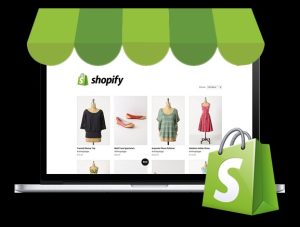
Webflow has quickly risen to prominence as one of the most popular no-code platforms for website design and development. Whether you’re a designer, developer, or entrepreneur, Webflow offers a powerful, user-friendly tool that allows you to create stunning websites without needing to write a single line of code. In this article, we’ll explore what makes Webflow a standout platform, how it works, and why it might be the perfect solution for your next website project.
What is Webflow?
Webflow is a web-based platform that allows users to design, build, and launch responsive websites visually. Unlike traditional website builders, which often come with design restrictions, Webflow combines the flexibility of hand-coding with the ease of a drag-and-drop editor. It’s perfect for those who want to take control of their website’s design while avoiding the complexity of writing code from scratch.
Webflow targets designers, agencies, and businesses looking to create professional websites without relying on a full-stack development team. Whether you’re designing a simple landing page or a complex e-commerce store, Webflow gives you the tools to bring your vision to life.
Key Features of Webflow
- Visual Design and Development: Webflow’s visual interface allows you to design websites with pixel-perfect precision. Every element is customizable, from typography to layout, making it possible to design a website that looks exactly the way you want. Webflow’s interface mirrors CSS and HTML, so the code generated is clean and customizable.
- Responsive Design: With Webflow, creating responsive websites is easy. You can design for different devices such as desktops, tablets, and smartphones in the same environment. Webflow automatically adapts your design, ensuring your website looks great on any screen size.
- No-Code/Low-Code: One of Webflow’s key selling points is its no-code functionality. Designers and non-technical users can build fully functional websites without touching code. However, for those who prefer to dive into the code, Webflow offers an option to customize the HTML, CSS, and JavaScript for greater control.
- Content Management System (CMS): Webflow’s built-in CMS allows users to manage dynamic content with ease. You can create collections for blog posts, products, team members, or any other type of content that needs regular updating. The CMS is flexible, making it perfect for marketers, content creators, and designers who want to control their content.
- Hosting and Security: Webflow provides fast, reliable hosting on Amazon Web Services (AWS) and includes a free SSL certificate for added security. Websites built on Webflow are hosted globally, ensuring fast load times and excellent uptime. Plus, you don’t have to worry about managing servers, updates, or plugins.
- E-commerce Integration: Webflow’s e-commerce capabilities allow users to create online stores with full customization. You can manage products, track inventory, accept payments, and integrate third-party tools for shipping and marketing. Unlike platforms that limit your design, Webflow e-commerce lets you fully control the look and functionality of your store.
- SEO Optimization: SEO is crucial for any website, and Webflow provides built-in tools to help optimize your site. You can manage meta tags, alt texts, and create clean URLs, ensuring your website is optimized for search engines right from the start.
- Interactions and Animations: Webflow allows designers to create rich animations and interactions without using JavaScript. You can create scroll-based animations, hover effects, and more, all through the platform’s intuitive interface. This feature allows you to create an interactive and dynamic user experience.
Why Choose Webflow?
- Full Design Control: Webflow gives you complete freedom over your design. Unlike template-based builders like Squarespace or Wix, you can customize every detail, making it ideal for unique, creative websites.
- Time and Cost Efficiency: Traditional web development can be time-consuming and expensive, requiring both designers and developers. With Webflow, designers can handle most of the development work themselves, speeding up the process and reducing costs.
- Great for Agencies and Freelancers: Webflow is particularly popular among design agencies and freelancers who want to deliver high-quality websites without the need for a development team. The platform’s collaboration tools and client handoff features make it easy to manage multiple projects.
- Customizable and Scalable: Whether you’re creating a simple portfolio or a full-fledged e-commerce store, Webflow is scalable. Its flexible structure allows you to grow your site as your business grows.
- Educational Resources and Community Support: Webflow has an extensive library of educational resources, from tutorials and videos to a supportive community forum. Whether you’re a beginner or an expert, Webflow University offers comprehensive guides to help you master the platform.
Webflow offers a range of plans tailored to different needs, from personal projects to large businesses. Their pricing is divided into two main categories: Site Plans (for individual websites) and Workspace Plans (for teams or agencies). Here’s a breakdown of the available plans:

1. Site Plans
Site Plans are for anyone looking to publish a single website, and they come in two main types: General Websites and E-commerce Stores.
General Websites
These plans are suitable for portfolios, blogs, business sites, and other content-driven projects.
- Free Plan:
- Best for experimenting with Webflow or hosting basic websites under a Webflow.io subdomain.
- Limitations: No custom domain, Webflow branding, and basic features only.
- Basic Plan ($18/month billed annually):
- Ideal for simple websites that don’t require a CMS.
- Features: Custom domain, up to 25,000 monthly visits, and basic hosting.
- CMS Plan ($29/month billed annually):
- Great for blogs, news sites, or any content-driven website.
- Features: Custom domain, up to 100,000 monthly visits, and full CMS functionality for dynamic content.
- Business Plan ($49/month billed annually):
- Perfect for high-traffic websites or businesses.
- Features: Custom domain, up to 500,000 monthly visits, enhanced site performance, and higher limits on CMS items and form submissions.
- Enterprise Plan (Custom Pricing):
- Tailored to businesses with large-scale needs.
- Features: Advanced security, custom traffic scaling, and premium support.
E-commerce Plans
For those looking to build an online store, Webflow’s e-commerce plans provide all the necessary tools for managing products, payments, and more.
- Standard Plan ($42/month billed annually):
- Ideal for small stores just starting out.
- Features: Up to $50k in annual sales volume, 2% transaction fee, custom checkout, and basic e-commerce features.
- Plus Plan ($84/month billed annually):
- Suited for growing stores.
- Features: Up to $200k in annual sales volume, 0% transaction fee, more products, and advanced e-commerce options like unbranded emails.
- Advanced Plan ($235/month billed annually):
- Designed for high-volume stores.
- Features: Unlimited sales volume, 0% transaction fee, custom shipping and tax integrations, and premium support.

2. Workspace Plans
Workspace Plans are meant for teams or freelancers managing multiple projects. These are divided into Core and Growth categories:
For In-House Teams:
- Core Plan ($28/month billed annually, per seat):
- Best for small teams working on internal projects.
- Features: Unlimited unhosted sites, client billing, custom code, and basic collaboration tools.
- Growth Plan ($60/month billed annually, per seat):
- Suitable for larger teams.
- Features: All Core features, advanced collaboration tools, enhanced permissions, and more seats for editors.
- Enterprise Plan (Custom Pricing):
- For large organizations with complex needs.
- Features: Tailored security, advanced permissions, SLAs, and support.
For Freelancers & Agencies:
- Starter Plan (Free):
- Great for individual designers and developers managing a few projects.
- Features: 2 unhosted websites and basic permissions.
- Freelancer Plan ($24/month billed annually, per seat):
- Designed for freelancers handling multiple client sites.
- Features: 10 unhosted websites, enhanced permissions, and client handoff tools.
- Agency Plan ($42/month billed annually, per seat):
- Tailored for agencies managing many projects.
- Features: Unlimited unhosted sites, advanced team collaboration tools, client permissions, and more.
Key Considerations:
- Custom Domains: Most paid plans allow you to connect your custom domain.
- SSL Security: Free SSL is included in all paid plans.
- Webflow Branding: Free and Basic plans show Webflow branding on the published site.
- Form Submissions: Higher-tier plans offer more form submission limits.
Conclusion
Webflow’s pricing structure is flexible and offers various plans to accommodate different users, from solo freelancers to large organizations. If you’re just getting started, the Free or Basic plans can help you familiarize yourself with the platform, while larger teams and e-commerce businesses will benefit from the more advanced plans with higher limits and expanded features.
If you’re unsure which plan is right for you, Webflow provides a clear path to upgrade as your needs grow, making it easy to scale your website or business.






